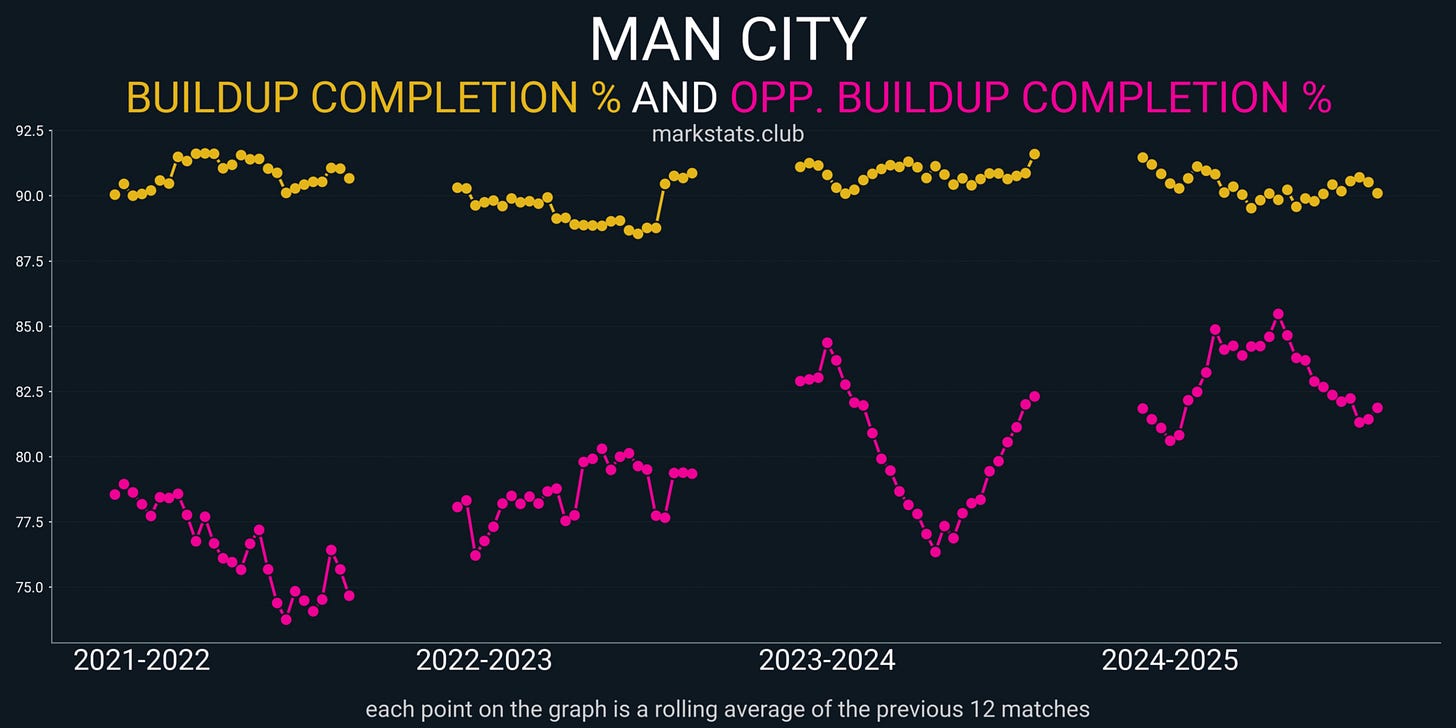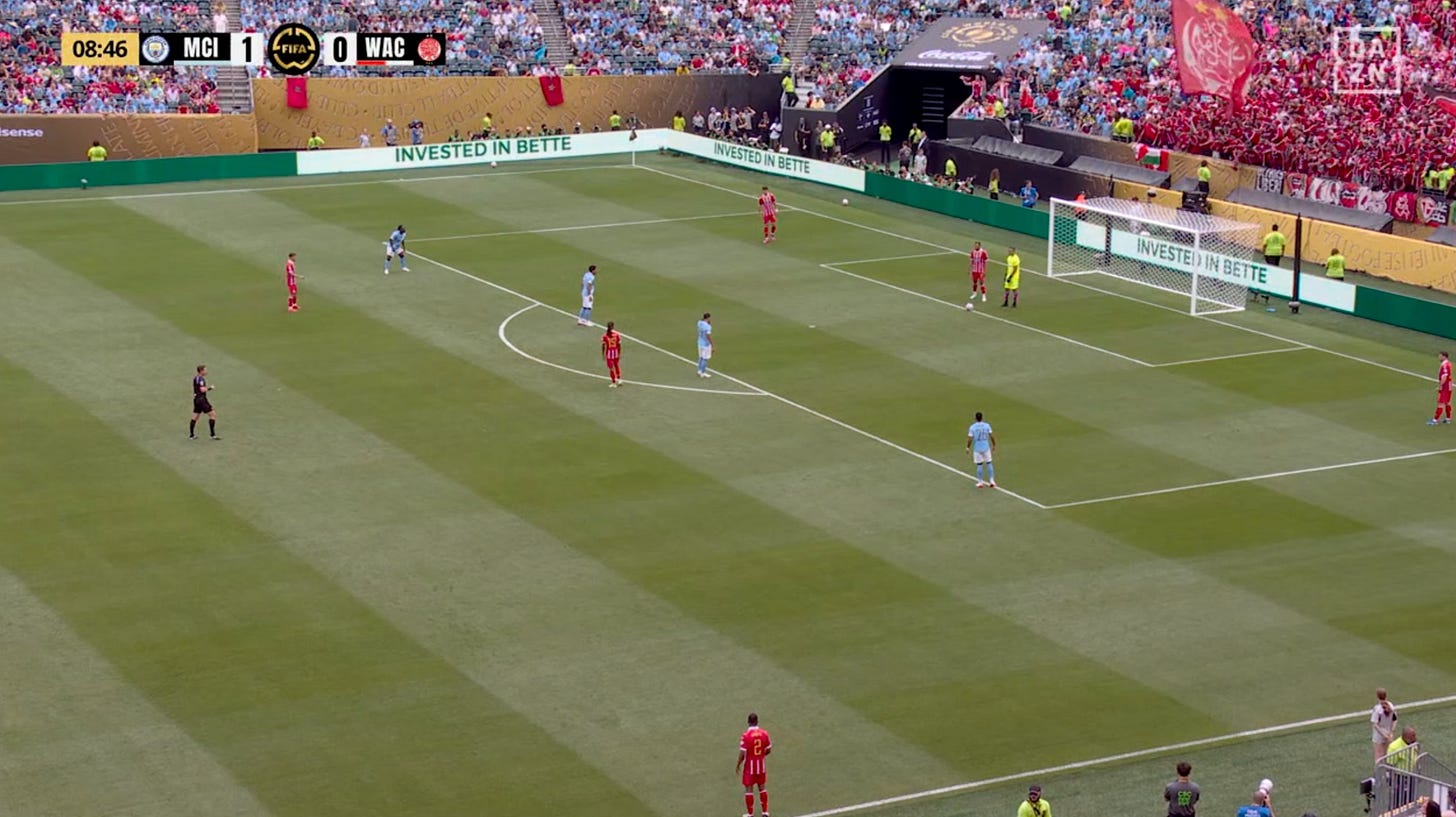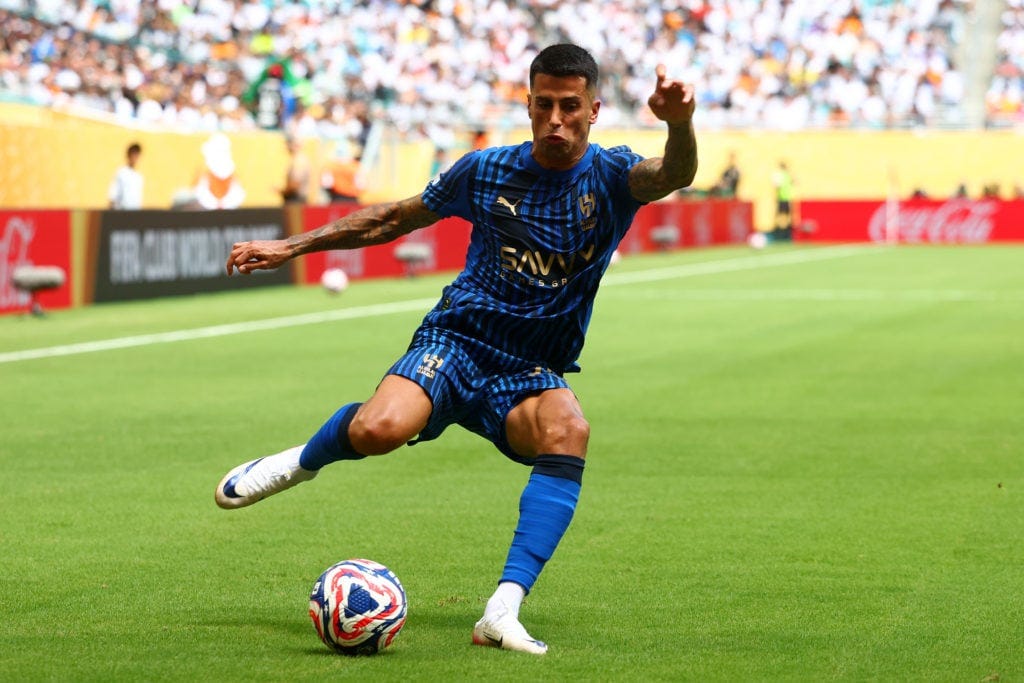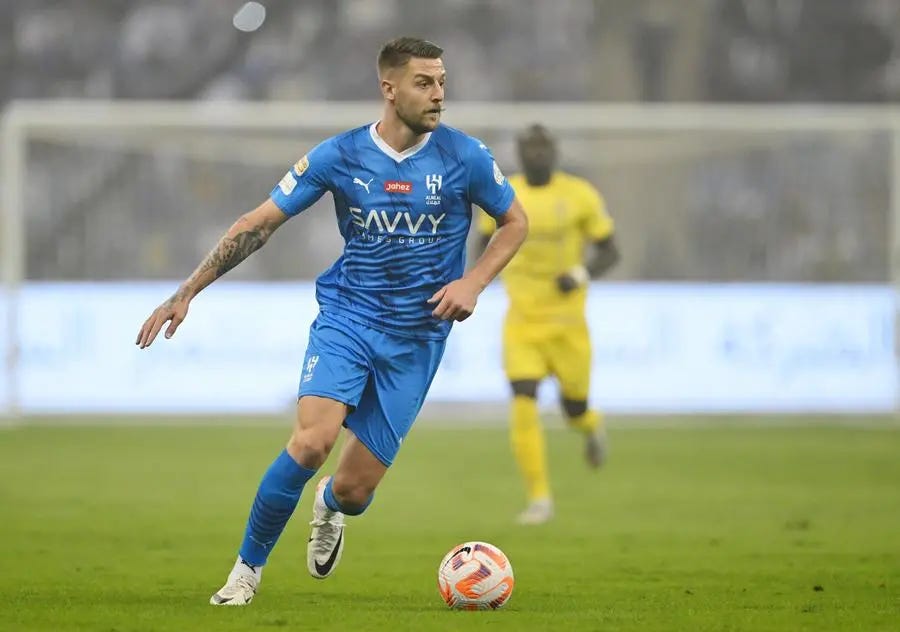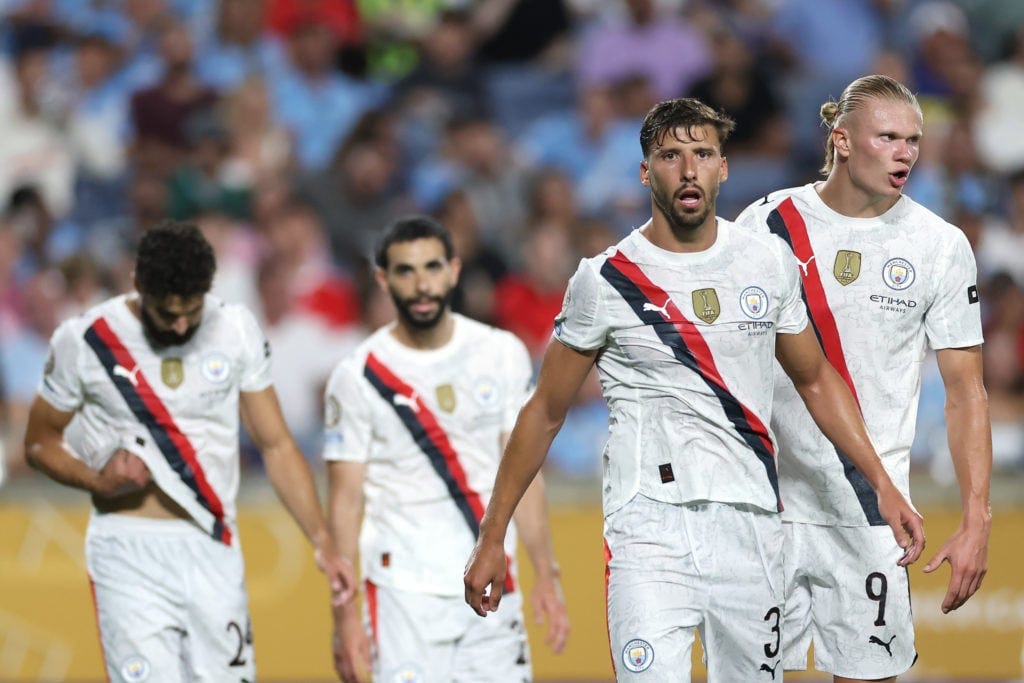Post Game Examinations: How Inzaghi's Al Hilal put us to the sword
Same old City?
The appointment of Pep Lijnders as Pep’s new assistant manager was highly anticipated by those of us in the football tactics sphere, with that anticipation mostly stemming from how he would look to transform our out of possession identity. However, last night City played one of their worst out of possession games in a long time, conceding transition after transition and giving up box entries like they were candy, and it ultimately resulted in us crashing out of the Club World Cup in a manner that seemed all too familiar to fans who watched a single minute of us the in the last six months or so.
In what should (hopefully) be one of many post game observations going forwards, I have decided not to focus on City as a whole specifically but key in on our out of possession scheme and pinpoint three key components that should, hopefully, reaffirm to Pep and the coaching staff the drawbacks of playing in such an overzealous manner out of possession.
Today’s Three Things
Varying the Heights of the Wingbacks
Overloading the Ballside
City’s Lack of Athleticism at Centre Back
The reason why the appointment of Lijnders was looked forward to so much, was because high pressing was the area of our game model that most significantly declined last year, and this graph by data analyst @markrstats does an excellent job of illustrating just how much we suffered there:
Lijnders himself stated in an interview in 2021, that “The better you press, the better you counter-press, the less you run, it is that simple because you don’t have to go 60 metres back. We call it organised pressing, organised counter-pressing, organised chaos”, and changes were evident immediately with City beginning the tournament in a hyper-proactive 4-2-4 hybrid press that was so aggressive, our four attackers were practically sitting inside the box on goal kicks, waiting to pounce on opposing centre halves, which resulted in some extraordinary screen-grabs.
The basic strategy of the press is to bait the goalkeeper into playing a long pass into the seemingly free wingback where our fullback is ready to initiate man to man pressure. This plays the probability game as it does three things: keeps the opponent’s build-up in their half, creates a fifty/fifty duel and uses the touchline as an extra defender.
Here’s an example of what it looks like when it works:
But what happens when the wingback isn’t where he’s supposed to be?
1. Varying the heights of the wingbacks
As I highlighted in the introduction, our fullbacks play the most important role in the success of the high press as it is up to them to cover the most ground and also to initiate the man to man phase of the hybrid press. However, the side effect of this approach is if a team can somehow find a way to prolong and exploit the short amount of time it takes to transition from zonal marking to man marking, it can leave your centre-halves in precarious situations in transition.
Inzaghi realised this and instructed Cancelo to start high on the far-side, but when the ball reached the near-side to drop his position deeper which left Ait Nouri in no man’s land and if Gvardiol wasn’t switched on and ready to rotate onto the attacker, Al Hilal were facing goal with numbers ready to attack.
Here’s a few examples of this:
The margin for error in these transitions from zonal to man marking is incredibly small and, as shown in the clips above, can be the difference between conceding a goal or not. One miscommunication or lag in mental processing in the engagement phase can have disastrous consequences.
2. Overloading the ballside
During the game, I tweeted around the twelth minute that I had some concerns with Reijnders’ use as the holding midfielder. This was due to his questionable defensive intelligence and it seems that Inzaghi also had some concerns as Al Hilal found constant success exploiting his slow defensive anticipation skills.
Also in the introduction, I stated how one of the aims of Man City’s high press was to play the probability game by betting that the opponent won’t be able get out of a situation of numerical equality/parity, and Al Hilal flipped the probability on it’s head by simply bringing over another player to the near-side.
Milenkovic Savic was the player particurlarly integral to this, as he was able to consistentl find connections with his centre halves. He did this by receiving long balls into the midfield with a well timed overload before finding a connection with his forward, or recycling the ball to consolidate possession.
Here are a few examples of him doing just that:
Note in these clips, the amount of time it takes Reijnders to react to the change in stimuli, and how by the time he stops ball-watching, Savic has already received the ball and instigated a transition.
These are the small holes that we don’t notice Rodri plugs in when he’s fit and in the starting XI, and it’ll be very interesting to see how Reijnders minutes as the holding midfielder progress as the season goes on.
3. City’s Lack of Athleticism at Centre Back
When choosing an out of possession approach, in possession approach or any sort of approach on the pitch, you need to first take into account the skillset of the players at your disposal. Neither Ruben Dias, Josko Gvardiol or Nathan Ake are defenders whose strengths lie in their ability to cover large amounts of space and eat up grass.
Marcos Leonardo, Mohamed Kanno and Malcolm had a field day when it came to exploiting these weaknesses through choreographed double movements and intelligent positioning in offside positions, to then get onside and explode again when the pass was played, and Al Hilal were not afraid to bypass the press completely as shown below.
If this approach is something that we have committed to long term, then it might lead to chances for Khusanov to assert himself into the starting eleven for his superior physical capacity.
Conclusion
To conclude what was yet another stimulating duel between Simone Inzaghi and Pep Guardiola, Inzaghi showed once again that, despite his departure from European football, when he has the requisite tools at his disposal to compete, he is as formidable as any manager in the world. City however showed us that, despite all of the fanfare made about our summer signings, there are still some questions that need to be answered before we can claim that we’re back to full capacity.


